The Problem
The algorithmic standard elements each Nassi-Shneiderman diagram is composed of are of course referred to at many places of the graphical user interface (GUI) of Structorizer: in menus, dialogs, and messages. The elements must of course be named somehow. These names are subject of localization i.e. per chosen language there will usually be a different set of designations. The localization is not always complete, looks sometimes un-natural, is not necessarily unique and sometimes not even consistent. Moreover, it is not always welcome to everyone. Many users feel more comfortable with the familiar English concepts.
By means of the Translator tool, you could of course derive an individual translation file from the respective locale shipped with Structorizer. But this is tedious, not only because of the many occurrences of element names in the locale files. An additional complication is: Whereas in general any accomplishment proposal sent to the developers (particularly for those locales that have fallen behind the functional development of Structorizer) is highly welcome, this may be of little help in this specific field of element names where conflicts are likely.
The Solution
Structorizer now offers you to configure your favourite naming of element types in an easier and more sustainable way (since version 3.27-04). Such individually specified labels will override the localized names from the locale, independently of the chosen language.
In order to configure your individual designation set, select the menu item "Preferences › Element names ...":
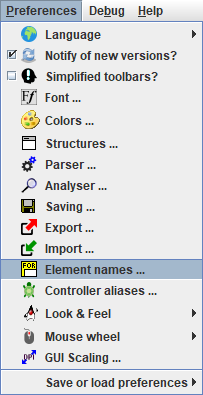
This menu item will open the Element Names Preferences dialog (see following screenshot). In the left column, the localized names of the element types and flavours according to the currently chosen language are listed. In the right column, there is a text field for each of them where you may enter your preferred name. You may leave some fields empty, in which case the respective name on the left side won't be overridden (but be aware that this will hold for any chosen language):
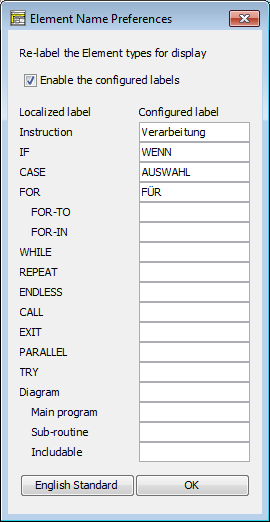
The text fields are only editable while the checkbox "Enable the configured labels" is selected. The second effect of this checkbox is that it enables (or disables, if unselected) the actual name replacement in the GUI texts. The following screenshots of a menu and a dialog demonstrate the effect of the example above (after having enabled the configured element labels):
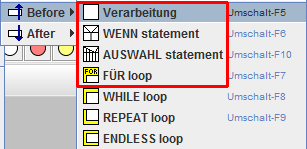
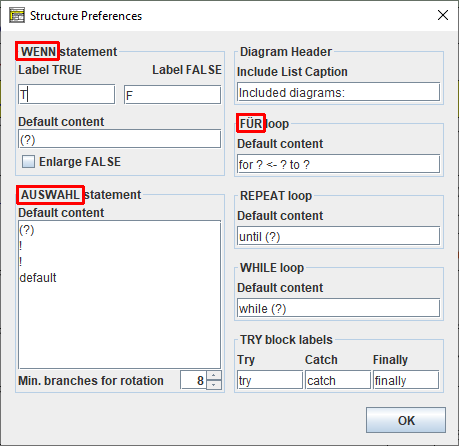
If you disable the configured labels (uncheck "Enable the configured labels"), then the specified names won't get lost but remain there inactively such that the replacement may be re-enabled whenever this seems opportune.
Lest unaware users should be irritated, the checkbox will automatically be unselected whenever you change the locale (i.e. switch to another language via menu "Preferences › Language"). But as soon as you turn the mode on again, the replacements will immediately be effectuated, no matter which language you are in. Well, this is not quite true because some of the locale files haven't been prepared yet to support this feature.
Since version 3.29-11, a button at the bottom of the Element Name Preferences dialog fills in the standard English element type names (i.e. the English designations of the algorithmic structures) when pressed:
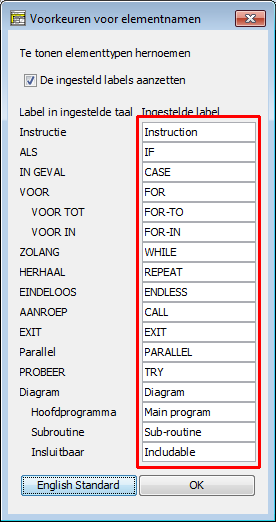
This way, the graphical user interface will always show the (internationally understood) English names, no matter what locale is selected. Yet you will still have to switch the checkbox on after changing the locale (see previous paragraph).
The Mechanism
To achieve the behaviour described above, the message retrieval mechanism was modified in a way that partially uncouples the labelling of elements from the remaining locale. Therefore, a new place holder mechanism was implemented where text translations should no longer directly contain localized element names but only specific markers to be substituted by the currently valid names for the related kind of element. These place holders start with a '@' character and may have a short or long form. In the short form, just a lower-case letter follows, whereas in the long form the successive key is an internal element class name enclosed in braces. While functionally equivalent, the somehat cryptic short form is more performant in message retrieval, whereas the long form is obviously more readable. In the following Translator screenshots, two locale files (the English and the Spanish one) use the short form whereas the French locale uses the long form:
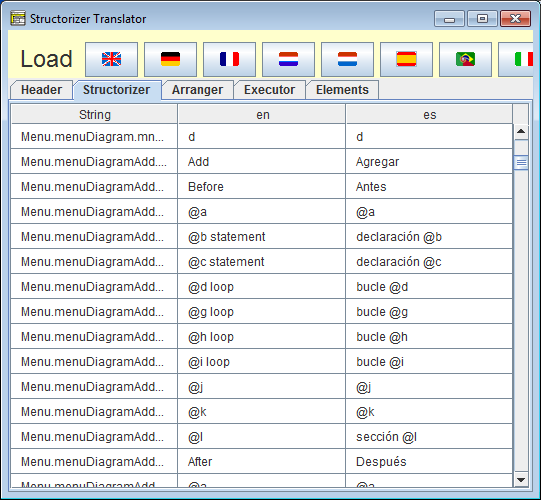
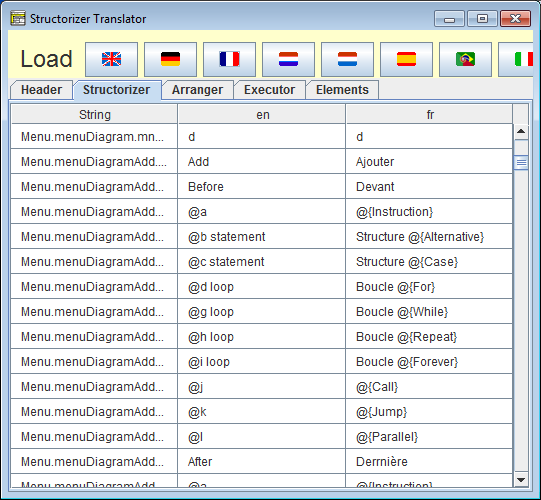
The localized element names themselves are now concentrated in a separate section / tab of the locale file rather than strewn redundantly all over the messages:
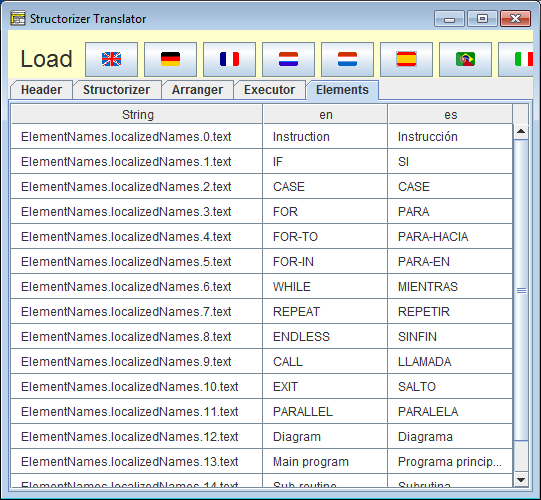
(In some cases and with some languages, however, this simple mechanism may cause trouble with grammar.)
The comment section in the language file headers contains an explaining legend:
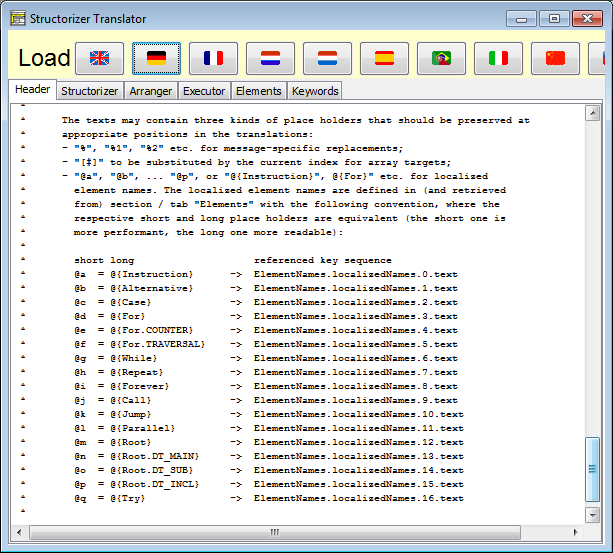
The user-specified element names use the same place holder mechanism but aren't stored in the locale files. Instead they reside in the "structorizer.ini" file in the user home directory.
Summary: Whenever a message contains an element name place holder (@...) then a three-stage substitution policy is applied:
- If user-defined element labelling is enabled (see above) and the name field for the respective kind of element is filled in then this designation will replace the place holder.
- Otherwise, the element type name from the locale file will be inserted (if specified).
- If neither a user-configured nor a localized name is available then the name from the English product locale will be used (fallback).
|

